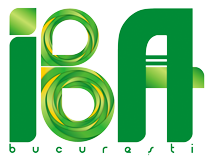In a context where licorice is often perceived as a natural and harmless ingredient, the French Agency for Food, Environmental and Occupational Health & Safety (ANSES) has issued a pertinent warning: frequent and excessive consumption can trigger high blood pressure, even in healthy individuals.
Chemical Composition and Toxicological Mechanism
Licorice naturally contains glycyrrhizin, a sweetening compound approximately 30 to 50 times more potent than sugar. Glycyrrhizin inhibits the enzyme 11β-HSD‑2, which plays a key role in the metabolism of cortisol. This inhibition leads to an excess of cortisol at the renal level, promoting sodium and water retention and potassium loss—effects that contribute directly to elevated blood pressure.
Relevant Epidemiological Data
Between 2012 and 2021, ANSES and its partners investigated 64 reported cases of licorice intoxication. Approximately 42% of these cases involved severe manifestations, including marked hypertension and cardiac disturbances. One fatality was reported in a patient with pre-existing liver disease.
Safety Thresholds and Labeling Concerns
ANSES has defined an indicative toxicological reference value (TRV) of 0.14 mg of glycyrrhizin per kilogram of body weight per day, equivalent to 10 mg/day for a 70 kg adult. However, current food labeling regulations require a warning only if glycyrrhizin content exceeds 100 mg/kg in foods or 10 mg/L in beverages—a threshold significantly higher than the TRV and therefore insufficient to adequately protect consumers.
Estimates suggest that 60% of adults and over 40% of children who consume licorice products exceed this TRV, raising serious concerns about the safety of regular intake.
Vulnerable Population Groups
According to ANSES, certain groups are particularly at risk:
- Individuals with hypertension, heart, kidney, or liver disorders
- Pregnant or breastfeeding women
- Children
- People undergoing treatment with diuretics or other medications that affect electrolyte balance
Policy and Consumer Recommendations
Based on the findings, ANSES recommends the following:
Mandatory labeling with the warning: “Contains licorice – excessive and/or repeated consumption may cause high blood pressure and other serious adverse effects”
Limiting daily intake to below 10 mg of glycyrrhizin
Avoiding daily or cumulative consumption from multiple sources (e.g. candy, teas, alcoholic drinks, supplements)
Medical consultation before consumption in the case of vulnerable individuals or those with chronic conditions
Conclusion
The ANSES study reveals that although licorice is a natural product, it can pose genuine cardiovascular risks when consumed excessively or on a repeated basis. Through well-documented endocrine mechanisms and clinically significant outcomes, the research raises important questions about current regulatory standards and advocates for both moderation and greater consumer awareness.
This analysis highlights the need to re-evaluate labeling practices and food policy while also encouraging prudence in licorice consumption, particularly among individuals with cardiovascular vulnerabilities.
Source: [ANSES – French Agency for Food, Environmental and Occupational Health & Safety]

